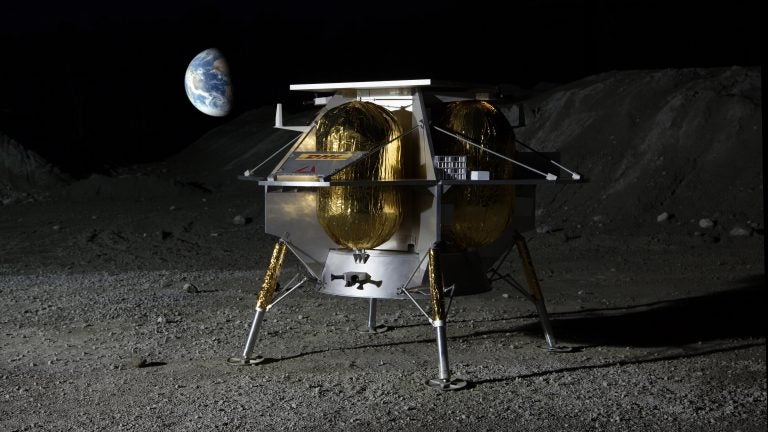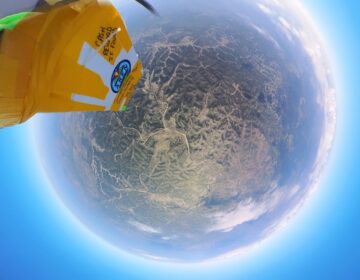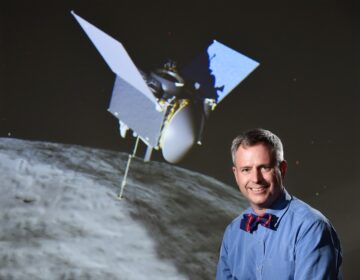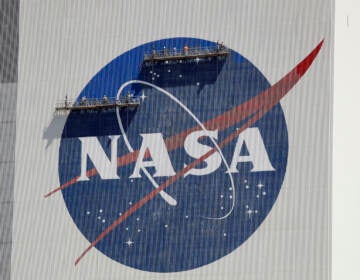NASA’s 2024 return to the moon will go through companies in Pa., NJ.
Fifty years ago, NASA had to design and build everything for the Apollo mission. Now, it will place an order with a private Pennsylvania company for a lunar lander.

A rendering of the Peregrine Lander. (Courtesy of Astrobotic)
Fifty years ago, NASA employed hundreds of thousands of people and spent billions of dollars to get astronauts to the moon. They built everything needed for the trip from flight computers to a lunar lander.
Now NASA is preparing to go back by 2024. But this time, the agency will buy the needed technology. Private companies will supply items like flight computers and lunar landers.
John Thornton is the CEO of Astrobotic, a company in Pittsburgh which recently got a $79.5 million contract from NASA to carry scientific equipment to the moon by July 2021. He describes his company as “DHL to the moon.”
He said satellites started out as something that only national space agencies could build and operate, but now a new industry has been created to cater to space needs. Those companies have put thousands of items in space to support things like satellite phones and Google maps. He said the same will happen with the equipment needed to get to the moon.
“We’re in that transition right now where space agencies are handing off the easier parts of the moon like lunar delivery to the commercial world, while the space agencies are focusing on the hard parts [like science and Mars exploration,]” Thornton said.
Thornton said after transport, one of the first major businesses on the moon will be harvesting water ice to make hydrogen and oxygen, the components of rocket fuel.
In a statement, NASA Administrator Jim Bridenstine described these contracts as “another strong step to build a commercial space economy beyond low-Earth orbit.”
Astrobotic won another $5.6 million NASA contract this week for an autonomous moon rover around the size of a microwave.
The company’s director of planetary mobility Mike Provenzano said it will be completely autonomous, which has not been done before in a rover. That means that unlike NASA’s existing Mars rovers, which are operated by humans from a distance like remote-controlled cars, Astrobotic’s moon rover will travel 2 km on its own collecting data to make a detailed 3D map.
A self-driving rover has a big advantage over a human-operated one: the rover does not need to wait for instructions to get from the earth to the moon. Provenzano said a human-operated rover would be able to move 1cm (0.39 inches) every two minutes, factoring in the time for humans to see what the rover sees, decide what to do, and send those instructions to the rover on the moon. An autonomous rover can move much more quickly and cover more ground before it stops working due to the extreme cold lunar nights.
Orbit Beyond, a company based in New Jersey, has also gotten a NASA contract to send equipment to the moon by September of next year.
WHYY is your source for fact-based, in-depth journalism and information. As a nonprofit organization, we rely on financial support from readers like you. Please give today.





